How to Plan Your First Yosemite Camping Trip: A Family Adventure Awaits!
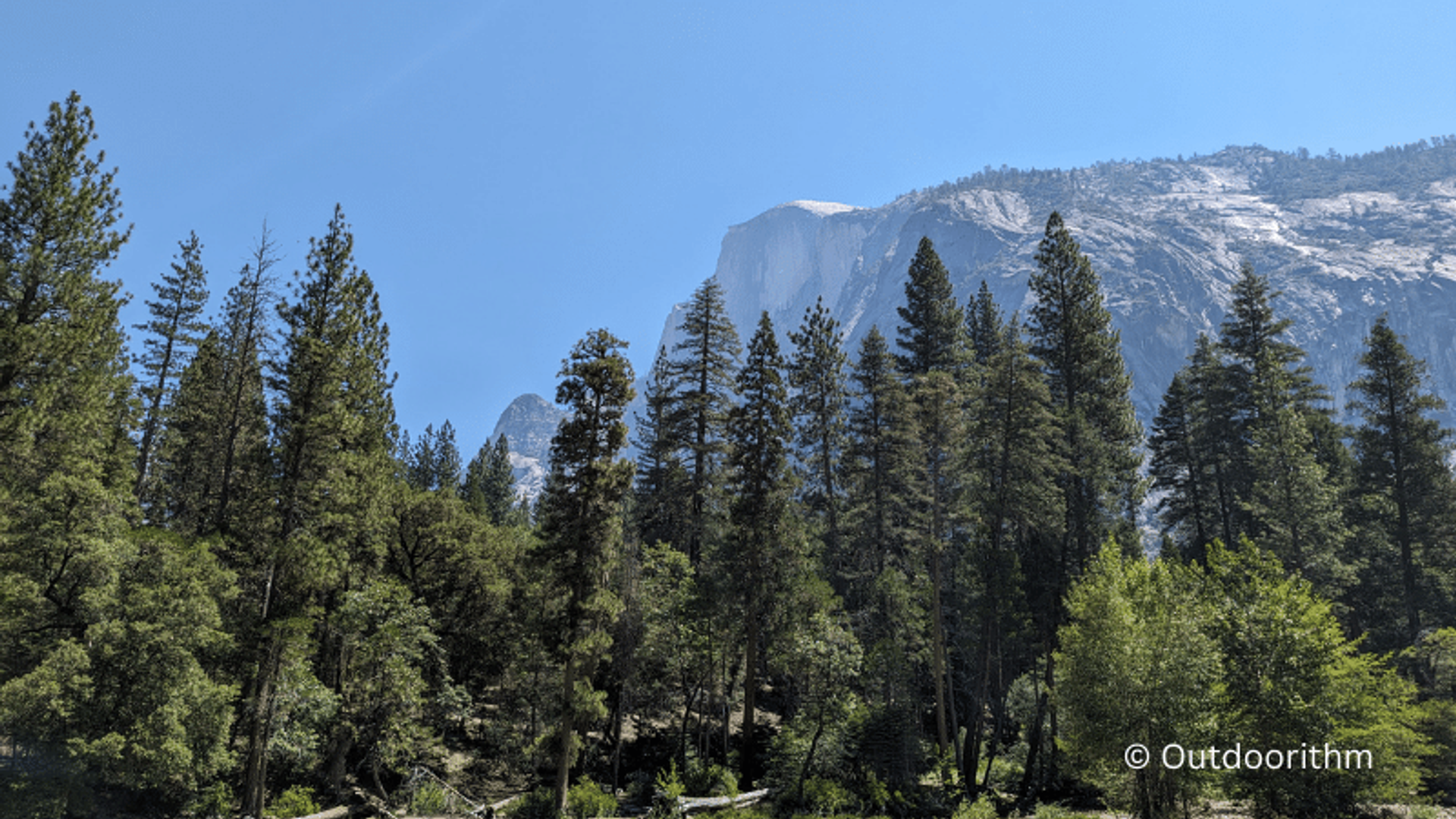
Imagine waking up to the crisp mountain air, surrounded by towering granite cliffs and the sounds of nature. Yosemite National Park, with its stunning waterfalls, ancient giant sequoia trees, and diverse landscapes, offers an unforgettable experience for families.
Our family loves camping - we went on more than 20 trips last year - and we’ve been going to Yosemite with our four daughters for almost a decade. The views never get old. Carved by glaciers and home to towering granite cliffs, cascading waterfalls, and ancient giant sequoia groves, Yosemite National Park is a natural wonderland in California's Sierra Nevada mountains. Established in 1864 as the first protected wilderness area in the US, it boasts diverse landscapes, from lush meadows and deep valleys to subalpine forests and granite domes. Yosemite offers countless opportunities for exploration and adventure, and is the perfect place for an immersive nature experience.
Whether you're seasoned campers or embarking on your first camping trip, this guide will help you plan a memorable adventure in Yosemite.
Deciding When to Go
Yosemite offers a unique beauty in each season. The winter snow renders the park absolutely magical, spring brings wildflowers and comfortable temperatures, while summer boasts warm days and longer daylight hours.
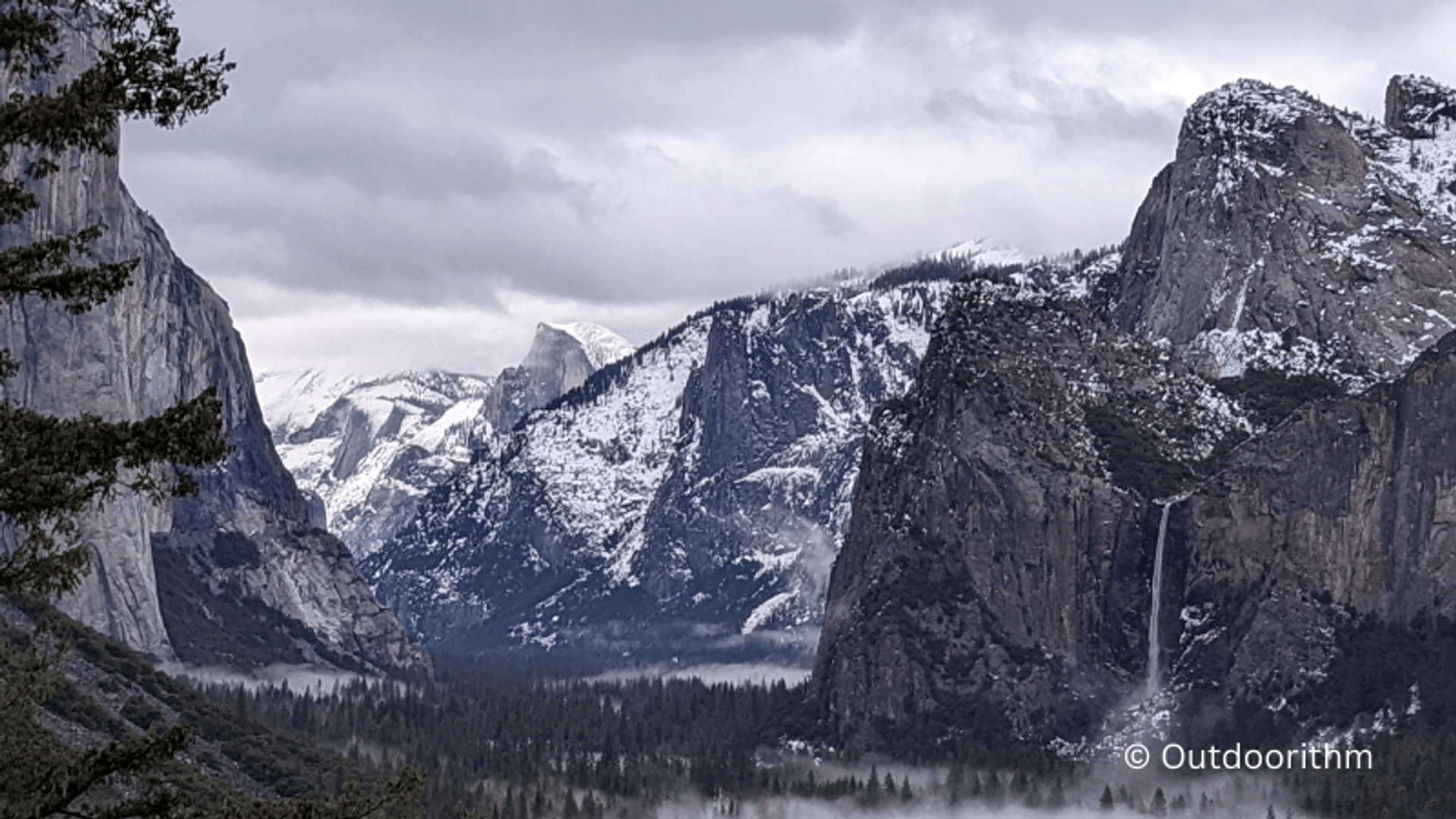
In deciding when to go, start by being realistic yet creative about what works for your family. If you want a week-long trip and you have school-aged children, your options might be largely limited to spring break and summer, but don’t dismiss fall break (if you have one) or even a four day weekend in the shoulder season (especially something like a teacher work day that does not fall around a major national holiday).
Next, look at logistics external to your family: the weather (and, relatedly, your ability to stay warm at night), campground availability and closures, and crowds.
You can easily check the weather using our nation-wide campground map. Simply type “Yosemite” in the search box and change the date to whenever you’re thinking of going; the map will provide you with historical weather data specific to the location and date you selected. Check again closer to your trip for real-time weather forecasts.
In Yosemite Valley, where there are the most amenities, only two campgrounds are open year round: Upper Pines (reservations required year-round) and Camp 4 (first come, first serve in winter; reservations required May-Oct). Popular Yosemite Valley campgrounds like North Pines and Lower Pines are only open approx. May-Oct, with exact dates depending on the weather. If you’re not as interested in being close to amenities, consider Hodgdon Meadow Campground, north of Yosemite Valley (open year-round). There are 5 other open campgrounds north of Yosemite Valley, with progressively higher elevations and therefore later open dates (June/July) due to snow. South of Yosemite Valley, Wawona Campground (open year-round) is a nice choice, right along the south fork of the Merced River.
It goes without saying that summer months bring much larger crowds, which also means increased competition for summer campground reservations. Peak season usually kicks off mid-April, fully peaks in July-August, and then tapers a bit till late October. Consider the shoulder seasons (fall and spring) for smaller crowds and easier reservations, but keep an eye on the weather as you plan and check again before you go.
Choosing Your Campground
Yosemite boasts several campgrounds, each with its own unique charm. Yosemite Valley offers views of iconic landmarks like Half Dome and El Capitan, as well as amenities that can make the trip more comfortable for families with young children (think quick grocery refreshes or a fun bike ride to get ice cream). For breathtaking views and a quieter experience, heading north of the valley might be a better choice for some families. Consider the activities you'd like to do plus the amenities that are important to you, and then choose a campground that aligns with your preferences. Join our newsletter and follow us on instagram to get peeks at our favorite campgrounds.
In the summer months, our family loves camping in North Pines or Lower Pines campgrounds, as it allows us to walk to Curry Village or bike over to Yosemite Village where there’s a small grocery store and several dining options. Both of these campgrounds also offer access to trails such as Lower Yosemite Fall. North Pines and Lower Pines both have flush toilets though neither have showers. Showers are available at nearby Curry Village. We use a Joolca hot tap shower system which has been a game changer for our family. Find all of our top gear recommendations on our GearMeUp tool.
Note that the popular Tuolumne Meadows Campground is still undergoing a major rehabilitation project and will remain closed in 2024.
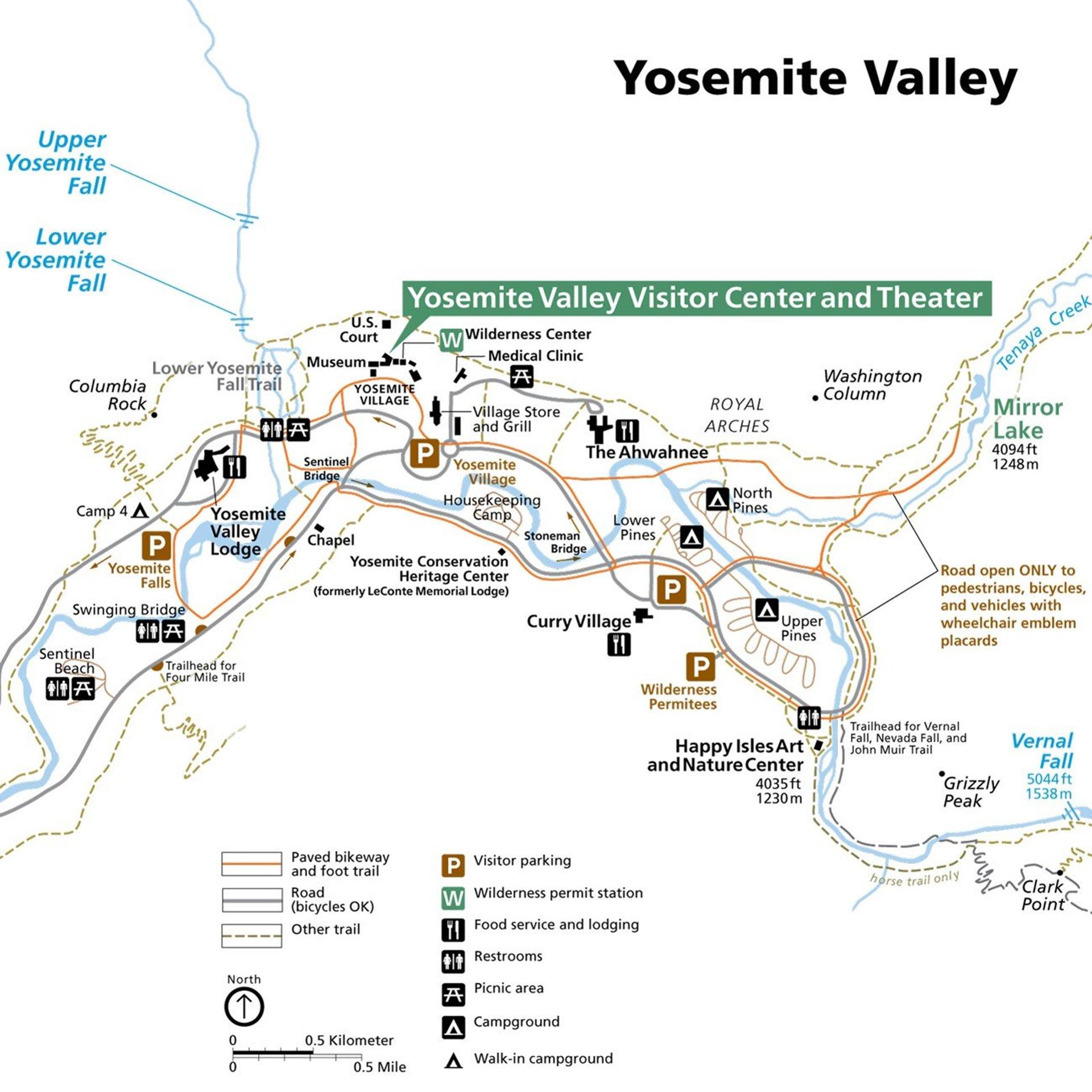
Yosemite Valley Map with bike trails (https://www.nps.gov/yose/planyourvisit/biking.htm)
Yosemite Campground Reservations
All reservations for National Parks are made at www.recreation.gov. For most campgrounds in Yosemite, reservations become available 5 months in advance, with campsites released on the 15th of each month at 7am PST. Tip: create an account and log in in advance; reservations go almost immediately.
North Pines campground has an early release lottery for peak-season (April-October) camping. Lottery applications are due late fall, selection is made in early winter, and reservations open up to lottery winners in early January. Any remaining sites are released starting Feb 15th.
FAQ: Is it true that I need a reservation to simply drive into Yosemite? If you have a Yosemite campground reservation, you do not need a separate reservation to drive into the park. Other visitors do need a reservation to drive into or even through Yosemite during certain dates and times between April 13 - Oct. 27, 2024 (see the exact schedule here). This was initially implemented in 2020 during the COVID pandemic but proved helpful in managing traffic coming into the park and so, at least for the time being, is still in use during peak season.
✨ Sign up for our weekly newsletter to get additional tips and information to make your camping trips happen. Become a member to also gain access to tools that help you find top campgrounds, make a reservation plan, and create customized gear lists.
What to Bring: Gear Essentials
While you don’t need to spend a fortune on gear, you should consider it as an investment in your trip. You are saving on hotel costs and dining out (and possibly flights if you drove to Yosemite instead of flying somewhere farther from home). Put a portion of that money towards solid gear and remember that, unlike paying for a hotel, you’ll be able to use the gear over and over. In fact, buying the gear might make you more likely to experience more of our amazing national and state parks.
So, what gear do you need? All our recommendations are on our GearMeUp packing list. Essentials include:
- Tent - we recommend going up one size from the number of people on your trip. That is, if there are 4 people in your family and you plan on sleeping in the same tent, opt for a tent labeled as a 6 person tent. This leave room for your clothing bag and to generally not step on one another.
- Sleeping bags & sleeping pads - look at the temperature rating and compare them to the night time lows for when you’re going (remember you can check the weather here; just input your campground location and trip dates). If you run cold like me, get a bag that’s for colder temperatures than expected. You can always remove clothing layers if needed. Sleeping pads are essential both to warmth, insulating you from the ground which will seep all your body heat, and comfort, providing a cushion between you and any rocks or unevenness in the ground.
- Camp chairs - while most campsites have picnic tables those seats are not comfy - save them for mealtimes and card games. For sitting around a fire, by a stream, or just outside your tent enjoying the stars, a camping chair is a must.
- Headlamps (and/or a lantern) - headlamps are great for hands-free lighting. This is helpful when venturing to the bathroom, prepping a meal, looking for your toothbrush, etc. It’s really nice for each person to have their own. Lanterns are great on a picnic table though we prefer string lights for better dispersed lighting and ambiance.
- Basic kitchen supplies - at a minimum we recommend a single burner, a pot and pan, a couple of cooking utensils, and dishes/eating utensils. A small tabletop grill gives you more cooking options
- Refillable water bottles - so many reasons: staying hydrated is important, we all get thirsty (and then cranky), refilling is better for the environment and takes up less space when packing, etc.
- Extras: trash bags, paper towels, ziplock bags or stash bags, and we recommend baby wipes because they’re magic.
- Extra, extra: consider a propane fire pit for ease of use. We love our Outland Living Firebowl 870 Premium ($160 on Amazon). If you want to build a fire, pretty much every established campground comes with a fire pit. Most sell firewood on-site and do not allow you to bring in firewood from other places. Remember to follow campfire safety regulations and practice responsible campfire habits, including only using designated fire rings.
Looking for specific recommendations so you don’t need to sort through a ton of gear options? Check out our Gear List.
Remember, comfort is key to making the experience feel like fun - nobody wants an achy back or to be cold at night, and good food always heals cranky moods (for toddlers, teens, and adults). Check out our gear list for a breakdown of the specific items we recommend across each category - we’ve selected ‘top’, ‘budget’, and ‘upgrade’ picks for each.
Clothing
Dress in layers, as mountain weather can be unpredictable. Even during summer trips, we recommend packing a base layer and long pants for the evening and mornings, hiking shorts or pants (you just want a fabric that’s not too hot and that won’t tear easily), breathable tees (preferably not cotton), and comfy socks. Comfortable walking shoes are essential for exploring the park's trails; we’ve found trail runners to be a great hiking option without the unnecessary weight of a hiking boot. Our kids often wear Keen’s kids’ hiking shoes with the bungee ties, which make them easier to take on and off, plus you don’t have to stop along the trail to tie shoes. With four kids, we’ve put a lot of gear to the test - join our newsletter to read our insights!
Baby/Toddler Carriers
Carrying your young child is a great way to sight see around Yosemite without worrying about bumpy wooden walkways, crowded sidewalks, or stairs, and a great way to explore the bounty of Yosemite’s trails. We’ve compared three top backpack carriers to find our favorite.
Activities and Planning Your Days
Yosemite offers a wide array of activities for families. Lower Yosemite Fall and Mirror Lake Loop are both easy hikes that are kid-friendly. Our family loves to hike while camping - read about the amazing hike we did in Yosemite last summer.
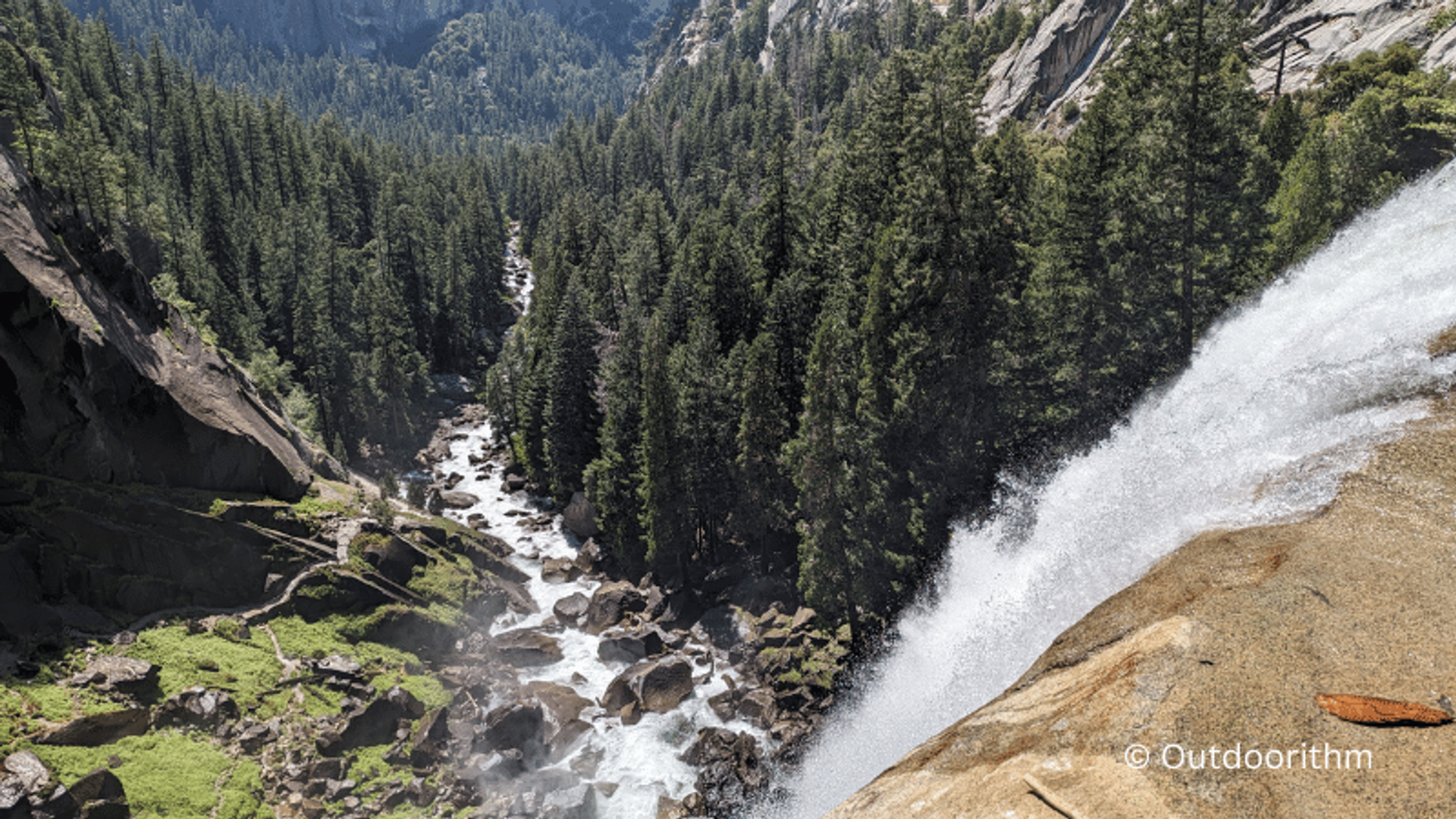
View from top of Vernal Fall. Incredible longer hike with the kids (ages 2-14).
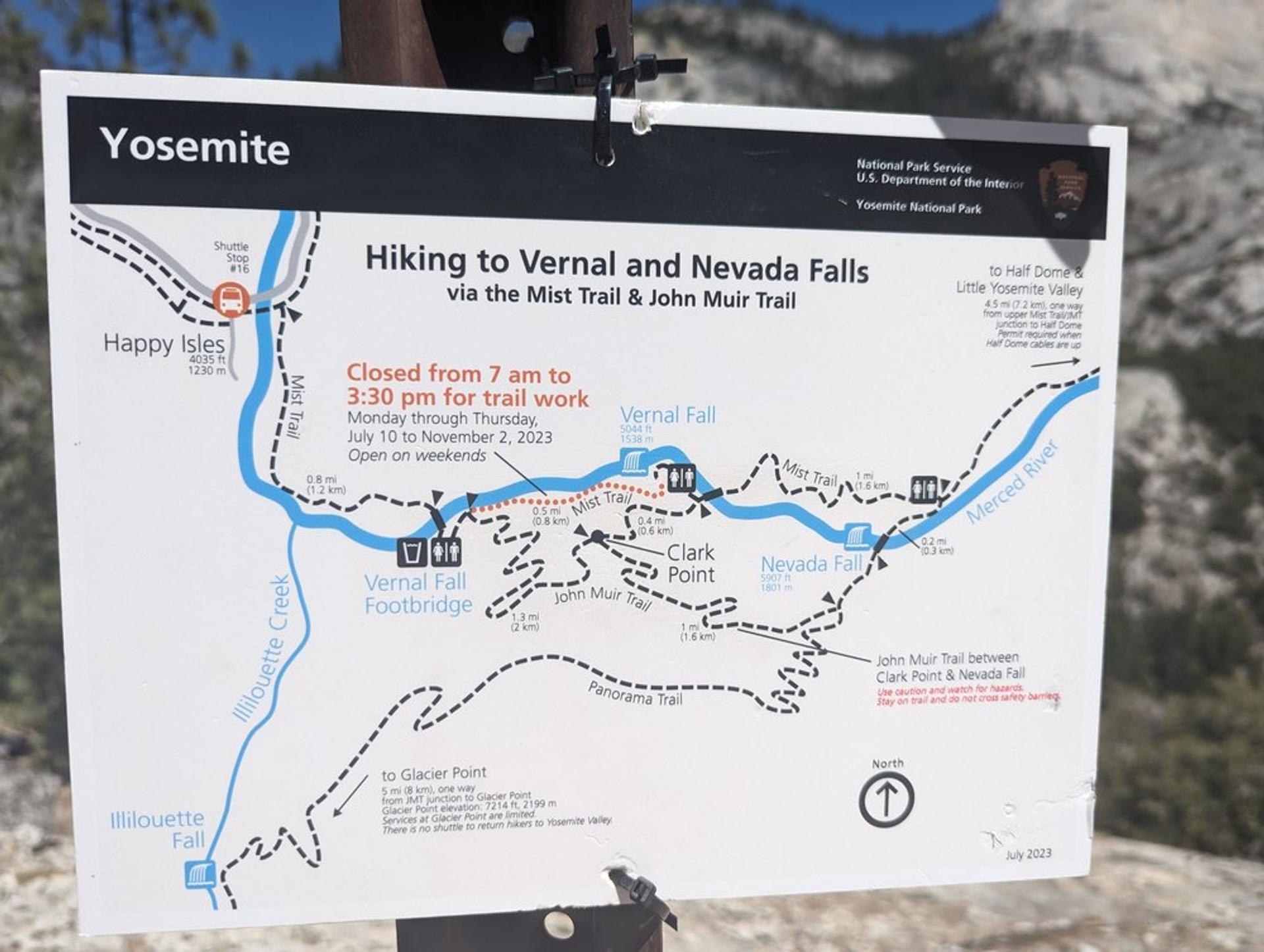
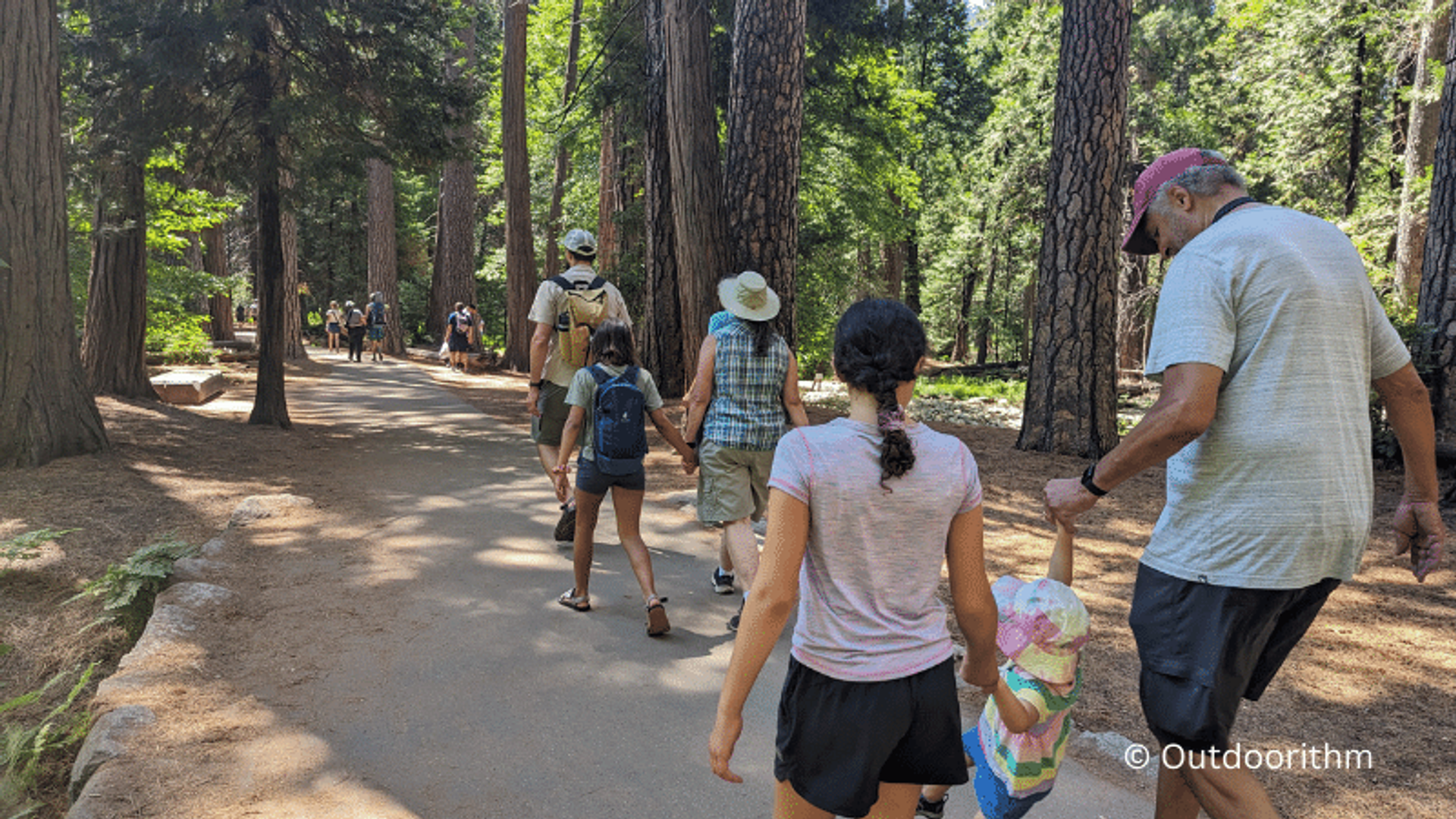
Hiking to Lower Yosemite Falls. Easy trail that’s great for the whole family.
Looking for an accessible trail? Lower Yosemite Falls is a family favorite - we go almost every winter - with paved walkways that are compatible for wheelchairs and strollers.
You can also stop by the Yosemite Valley Welcome Center, explore iconic landmarks like Yosemite Valley Lodge, or take advantage of ranger-led programs to learn about the park's natural history and cultural significance.
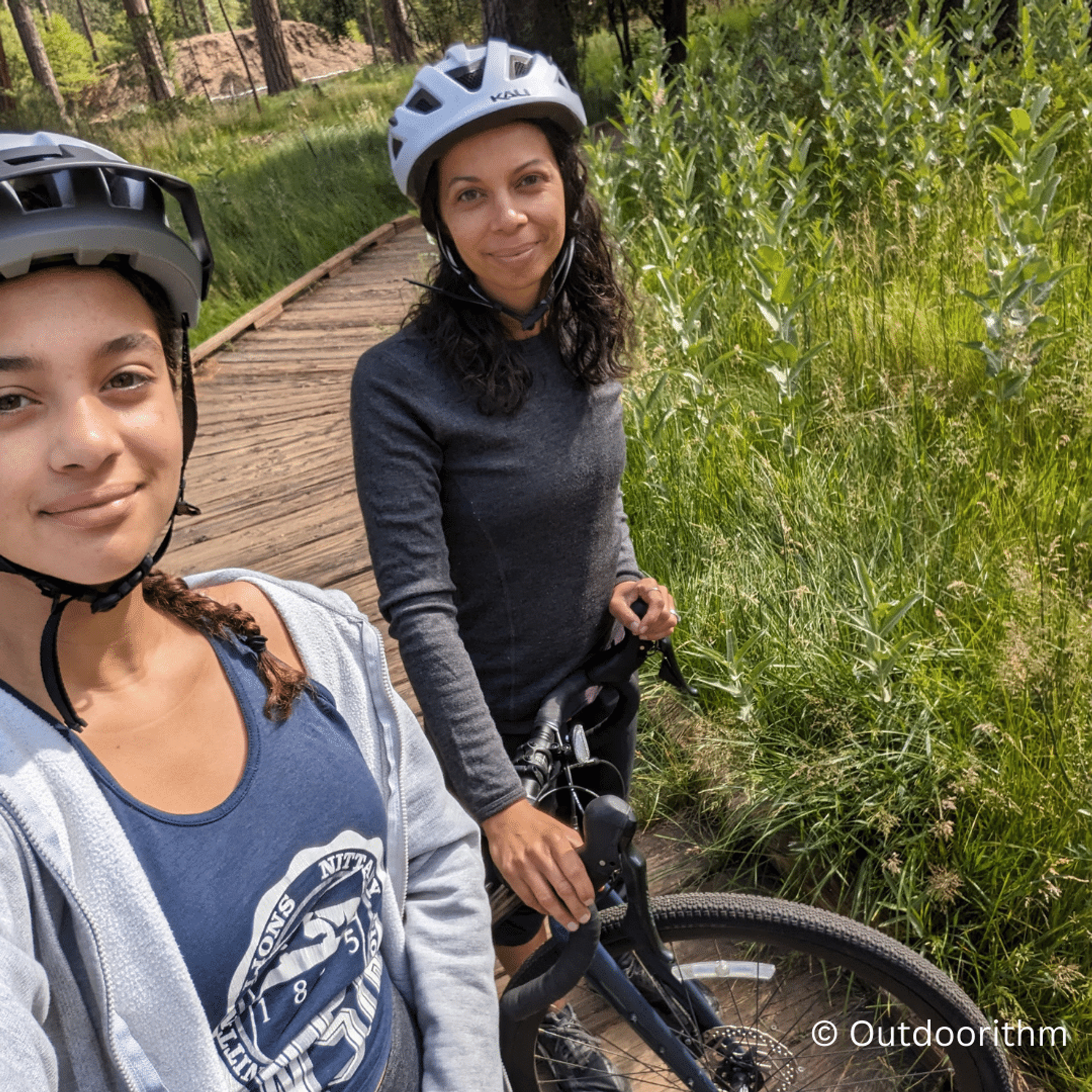
Family bike rides are a really great way to explore Yosemite. The park has a great bike trail system, and it’s also the easiest way to explore, get to trail heads, or swing by any of the amenities in Yosemite Valley.
A really fun summer activity is floating down the Merced River, which winds its way through the Yosemite Valley. Floating is only allowed in certain sections and depends on water levels, so keep an eye out for posted signs. Life jackets are often required, even for adults.
Whatever you choose to do, we recommend creating a loose daily itinerary to ensure everyone enjoys the trip. Schedule time for hiking, biking, exploring, relaxing around the campsite, and enjoying meals together. Download the National Park Service app for maps, detailed trail descriptions, and information on ranger programs.
Meal Planning
Planning meals beforehand saves time and ensures you have everything you need. Opt for simple, family-friendly options like sandwiches, wraps, pasta dishes, and one-pot meals. Remember to consider storage capacity, preparation time, and any dietary needs in your family. Consider investing in a camping refrigerator. If you are using a cooler with ice, think about what food you’ll want to eat first and where you can get refill ice, depending on how long you’re staying (ice is available at the Yosemite Valley grocery store). For instance, save your quick pasta dish with jarred tomato sauce or pesto (a great option!) for the end of your trip; make any meats or vegetables within the first couple of days you’re at camp. Check out our meal planning blog post for tips and ideas.
Wildlife Encounters
One of the joys of visiting Yosemite is knowing that it’s home to diverse wildlife. Following the park’s simple rules about about food storage and maintaining distance will keep both you and the animals safe.
While animals prefer to steer clear of humans, they can be attracted by the smell of food and will return to places where they find easy access to it. Don’t leave food out in the open, in your tent or in your car. Always use designated food lockers provided by the campground to store your food and toiletries, and put trash in the campground trash bins. This deters wildlife from approaching campsites in the first place.
If you do see wildlife, always maintain a safe distance and never feed any animals, no matter how small and/or cute they seem. It’s a good idea to familiarize yourself with park regulations and safety information about wildlife encounters before your trip (https://www.nps.gov/yose/learn/nature/animals.htm).
Recap: just remember to store anything smelly and not to approach wildlife. This will help you and your family safely enjoy the wonders nature has to offer.
A family camping trip in Yosemite is an opportunity to step away from life’s daily grind and immerse yourself in nature, where you can reconnect with yourself and your family, foster a love for the outdoors in your children, and creating lasting memories. Start crafting your own camping mini-retreat and embrace the awe-inspiring beauty of Yosemite National Park.
Last thing: planning a trip can feel like a lot but just tackle it one step at a time. Here are the steps:
- Pick a few dates that would work for your family
- Choose a few location options that feel good to you
- Read up on the reservation rules for those locations
- Make a reservation plan (the date and time reservations become available for booking) and then be persistent. Have backup locations and dates, and don’t get discouraged.
Need help planning? Check out the free resources at Outdoorithm or become a member to access our digital planning tools.
Want a custom trip plan? Reach out to us for pricing. We’ll help you choose a campground, go over weather, gear, meal prep, and more, and provide a detailed reservation plan (note: due to national and state park policies, you’ll still need to make your own reservation but we’ll tell you how!)
Has this been helpful? Join our newsletter to get camping recommendations, resources, and tips directly in your inbox!